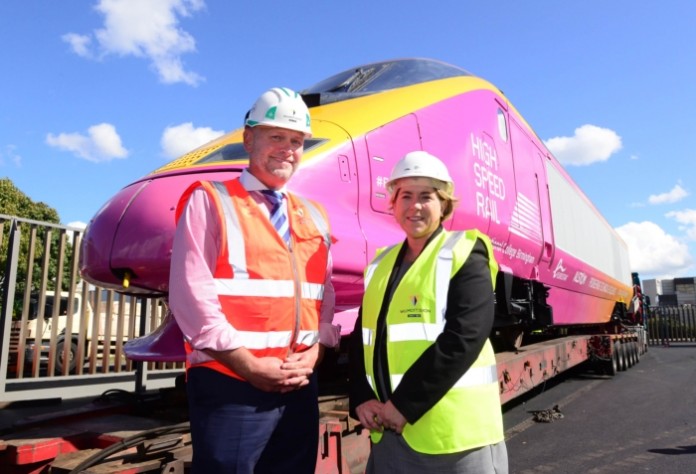
Construction company Willmott Dixon has delivered another key landmark that will create long-term economic benefits to Birmingham with the completion of the National College for High Speed Rail.
The National College for High Speed Rail is dedicated to solving the engineering, design, planning, manufacturing and construction skills gap that Britain faces as it looks to invest billions of pounds in modernising the national rail network and wider transport infrastructure.
At full capacity the £18.4 million college will train 1,200 learners per year and has been specifically designed to meet the requirements of students who will be provided with the skills necessary for the delivery and ongoing operation of the UK’s High Speed Rail services.
Located on Venture Way in Birmingham’s established learning quarter, the 58,221 sq ft (5,409 sq m) college is situated next to the Aston University Engineering Academy, and close to the future Birmingham Curzon HS2 terminus in Eastside and HS2 headquarters at Snowhill.
Extending over three floors, the building incorporates specialist teaching areas including a workshop, project spaces, a BIM technology suite and Command, Control and Communication suite. There will also be a café, quiet study areas and break-out spaces, with landscaping overlooking the Digbeth canal which runs alongside the site.
It’s the latest in a series of projects for Willmott Dixon in Birmingham, with others including the refurbishment of Lloyd House for the West Midlands Police Authority, several projects for Birmingham City University, and modernisation of the Lewis Building for L&G.
Nick Gibb, Deputy Managing Director for Willmott Dixon in the Midlands, said: “This facility will train the rail and infrastructure workforce of the future, who will be responsible for delivering the most important national transport infrastructure initiative for a generation.
“This is a landmark project and a crucial component in ensuring that future high speed rail services have well trained staff able to fill a variety of complex roles.”
Reflecting the national’s ambitious plans for creating a high speed rail infrastructure, a second National College for High Speed Rail has also been delivered by Willmott Dixon in Doncaster.
Clair Mowbray, Chief Executive, National College for High Speed Rail, said: “Willmott Dixon’s work on our Birmingham training campus has been impreFssive, with the project completed well within the build period that was initially discussed.
“This college will offer a state of the art learning space that is absolutely essential to ensure that the next generation of rail engineers are equipped with the right skills they need to deliver this key infrastructure project.”
Enabling work on the building began in January 2016. The main building works were started in May 2016, with the whole building completed in 67 weeks.
Cllr Brett O’Reilly, Birmingham City Council, said: “The achievements during the construction phase of the National College for High Speed Rail in Birmingham have been outstanding, with over 80 opportunities, including jobs, work experience and apprenticeships provided for local people.
“Construction is an exciting sector to work in, offering a wide range of opportunities and career pathways. It is great to see Willmott Dixon working alongside Birmingham City Council and our other partners, to support so many people to get jobs; and creating a legacy, which will continue when the College opens in September 2017, providing training for the future workforce for high speed rail and other major infrastructure projects.”
Ensuring their commitment to source skilled workers from the local area, Willmott Dixon secured approximately £8.4 million of work from within 10 miles of the location, including the mechanical and electrical works, painting and decorating, groundworks, demolition and ground remediation.
Upon completion, the building was handed over to Birmingham City Council who in turn handed it over to the National College for High Speed Rail.

















